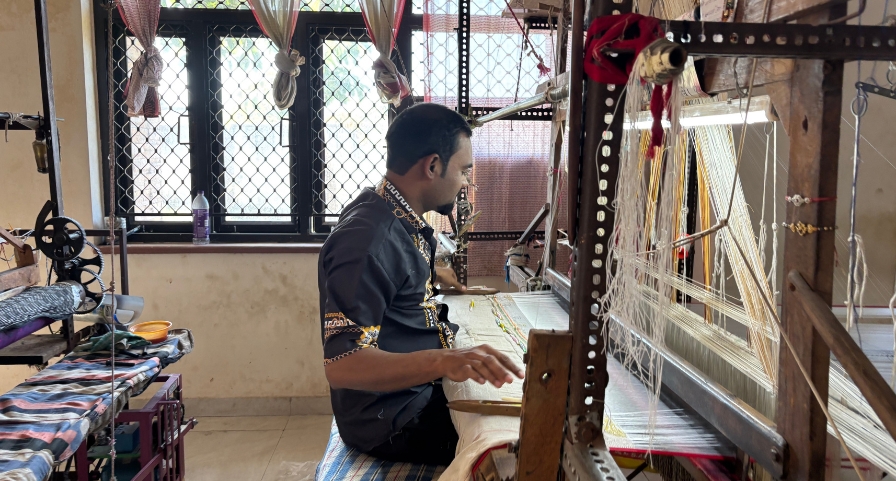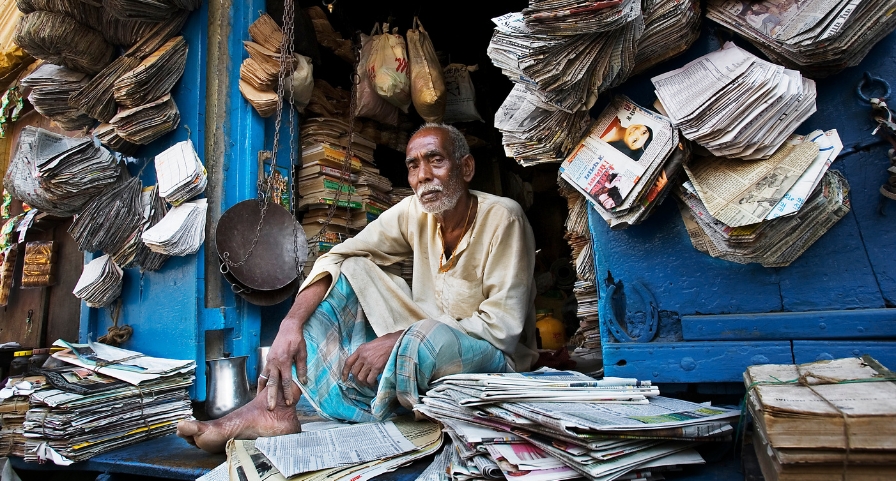The many strings of a kamancha
Novita Singh
Nov 20, 2024
Hamira village, Jaisalmer district, Rajasthan
The kamacha, aka kanmaicha, is a musical instrument with roots in Central Asia and many variants, like the kamancheh of Iran. In India its variation, the Kamancha, is played only by the Manganyar community of Rajasthan. And today with only one instrument maker left in India, the Amarrass Society for Performing Arts is doing its bit to revive the instrument.
The making of kamancha is an example of harmony between different cultures. It all starts with a single log of wood from the mango tree, which is carved by a master craftsman to create the body of the instrument. Today Shankara Ram Suthar, a Hindu and a carpenter by caste, is the only master craftsman left. The kamancha body is then passed on to a family of Manganiyars, a community of Muslim musicians, for further work.
The arrival of an instrument in the Manganiyar household is a cause for celebration as the instrument is treated like a child being born in the family. A goat is cooked and the family of musicians have a feast. The skin of the same goat is treated to skin the instrument and its guts are treated to make the 3 main gut strings of the Kamancha. Then there is a hunt for a male horse, whose tail hair is used to make the bow of the instrument. This entire process of making the instrument takes around a month.
The Late Padma Shri Sakar Khan, who played the kamancha, had told Amarrass records founder Ashutosh Sharma that there was only one kamancha maker left in the country – Shankara Ram Suthar. He had quit making kamanchas as the use of the instrument began declining, so he started making sofas after relocating to Pune.
This prompted Ashutosh to start a not-for-profit arm for his record label – the Amarrass Society for Performing Arts, which could focus on archiving folk songs and reviving the craft of instrument making. It also created a platform for these artisans and craftsmen to sell their instruments by taking orders from music enthusiasts or museums to preserve the instrument. They recently called Shankara Suthar back from Pune and gave him his first order in years to make Kamachas since 2011.
In this video Shankara Suthar can be seen making the body of the Kamancha, while the sons of Khan – Ghewar and Feroze – can be seen playing the instrument, carrying forward their father’s legacy.
Amarrass Records also organises the ‘Thar Blues’ music tours, in partnership with Village Square, where music enthusiasts can travel to the village in the Jaisalmer district to see Shankara Ram Suthar at work, visit Padma Shri Late Sakar Khan’s home and meet his sons Ghewar and Firoze and, of course, watch them perform. To book your spot visit musictours.co.in or get in touch with Village Square on Instagram.
The thumbnail shows Shankara Ram making the kamancha.
Lead photograph and video filmed by Sumer Singh Rathore and Noor Alam.
Novita Singh is the Associate Director, Video at Village Square.
The reporter would like to thank Pratyaksh and Ashutosh from Amarrass Records for their inputs.






